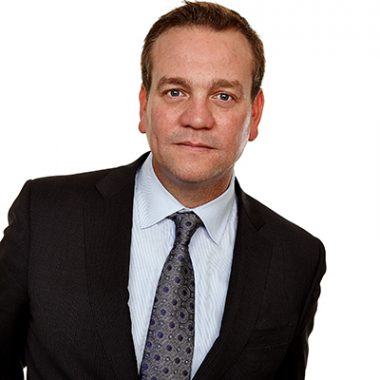Building a thriving advisory firm is a significant accomplishment, but what happens to the business, and your clients, when you’re ready to move on? A comprehensive succession plan can help answer those questions. In regards to when financial advisors should start succession planning, the short answer is as soon as possible. But the longer answer is more complicated, and depends on your specific goals and intentions.
Add new clients and AUM at your desired pace with SmartAsset’s Advisor Marketing Platform. Sign up for a free demo today.
The Importance of a Succession Plan for Financial Advisors
Succession planning allows you to determine the timing and conditions of your exit and facilitate a smooth transition to new ownership. Having such a plan in place can ensure business continuity, with little to no disruption in operations. Employees and clients alike may feel reassured knowing that there’s a clear path forward, even when you’re no longer at the helm.
A succession plan can also help increase your firm’s value. If you’re interested in selling the business to an outside buyer, this would be another reason to consider a succession plan. Proper planning demonstrates stability, which can enhance the business’s value in the eyes of a potential purchaser. This means the work you put in before your exit can also pay off when it’s time to sit down at the bargaining table.
The importance of succession planning for advisors is clear, yet it’s something many professionals seem to neglect. According to a Kestra Financial survey, just 6% of advisors nearing retirement have a plan to exit their businesses 1 . If you’re part of the 94% of advisors who don’t have a succession plan or exit strategy in place, developing one may be an important part of your firm’s long-term health.

Client Acquisition Simplified: For RIAs
- Ideal for RIAs looking to scale.
- Validated referrals to help build your pipeline efficiently.
- Save time + optimize your close rate with high-touch, pre-built campaigns.

CFP®, CEO
Joe Anderson
Pure Financial Advisors
We have seen a remarkable return on investment and comparatively low client acquisition costs even as we’ve multiplied our spend over the years.
Pure Financial Advisors reports $1B in new AUM from SmartAsset investor referrals.
When Should Financial Advisors Start Succession Planning?
Each advisor’s timeline for succession planning is different, but it’s generally something you want to start thinking about when you’re five to 10 years out from your exit. This usually gives you enough time to map out the details of your succession plan. The first step is recognizing the challenges that often accompany this process.
Advisors may struggle to:
- Choose an appropriate succession model
- Identify a successor if an internal transition is preferred
- Mentor and train their chosen successor
- Prepare their employees for the transition
- Navigate difficult conversations with clients about the change
- Detach themselves emotionally from the transition to see it through
Developing a structured calendar for completing the steps necessary to create a succession plan can make the process less daunting. Doing so allows you to more easily see when milestones should occur, so you can keep your plan on track.
Here’s what a typical timeline for financial advisor succession planning might look like.
Initial Planning (5-10 Years Out)
The first phase of succession planning begins when you’re still five to 10 years out from your departure. This is where you’ll want to ask yourself: What do you want to happen to the business when you’re ready to step away?
Your answer to this question shapes your approach to the rest of your succession plan.
An advisor who wants to pass the business on to a junior associate, for instance, may follow a different path than one who plans to sell their firm to another RIA. In the first instance, much of succession planning revolves around choosing and training a successor. In the second, you may be more concerned with increasing your firm’s value to command the highest asking price.
Other important questions to ask include:
- When would you ideally like to make your exit?
- What are the key milestones you need to prepare for? For example, when will you notify your team and clients of your exit?
- What legal or compliance issues will you need to navigate?
You’ll also need to decide if you want to handle the process alone or contract succession planning services. A succession planning consultant can help you formulate a plan for your exit that’s realistic, workable and doesn’t leave anything out.
Exit Preparation (3-5 Years Out)

This next phase is when much of the real work of succession planning begins. Here, the focus is typically on the following:
- Mentoring and training your chosen successor (if that’s part of your path forward)
- Building your practice’s value if you plan to sell
- Preparing your team for the transition
Successor development doesn’t necessarily mean training someone to be a carbon copy of you. It’s more about helping them cultivate the skills they’ll need to be a strong leader and deliver the level of service that your clients have come to expect. If you’re unable to find a successor internally, you may look for one outside of the firm.
Increasing your firm’s profitability, efficiency and retention rates can also make the business more attractive to buyers. Consider your brand’s visibility and how much value that adds to the equation, as well.
Obtaining a professional valuation can give you an idea of what your firm may be worth. You can then use what you learn from the valuation to adjust or make improvements that will boost the business’s value.
End Stage Planning (1-2 Years Out)
As your exit approaches, it’s time to begin having conversations with clients about what’s to come. Be prepared for clients to ask questions or voice concerns, and to have the same conversation multiple times. Clients will need reassurance, and good communication is a must.
At this point, you may have your successor begin sitting in on client meetings. Eventually, you may have them run the meetings while you assume a background role. Maintaining a presence can help clients ease into the transition, while giving your successor an opportunity to showcase their skills and expertise.
You’ll also need to finalize the details of your succession in writing. A succession planning consultant or a business attorney can assist with this step.
After Your Exit
Once you leave the business, you can focus on what’s next. If that’s retirement, then you should be investing appropriately to hit your target savings. If you plan to pursue a new career path or start another business, then you’ll need to know what that looks like and what training, education or certifications you need to make it happen.
Don’t leave this part of succession planning until the very end. Take time to craft a vision for the future, and give yourself room for that vision to change. Having something to look forward to and feel excited about can make the transition process that much more enjoyable.
Build a Better RIA
Drive growth with automation, not headcount using the all-in-one advisor marketing platform.

Bottom Line

When should advisors start succession planning? Where you are in your career, what you’ve accomplished and what you still want to achieve can help you answer that question. Succession planning is personal, and what your roadmap looks like may be quite different from another advisor’s. Starting early and continually refining the plan can ensure that you leave your business with no regrets.
Tips for Growing Your Advisory Business
- In the preliminary stages of your practice, you may be focused on client acquisition. After all, you need clients to grow. Partnering with an advisor marketing platform can give your business a boost and help you find qualified leads. SmartAsset AMP (Advisor Marketing Platform) is a holistic marketing service financial advisors can use for client lead generation and automated marketing. Sign up for a free demo to explore how SmartAsset AMP can help you expand your practice’s marketing operation. Get started today.
- Compliance is a key concern throughout the succession planning process. Your succession plan should be designed to comply with federal and state regulatory requirements. Working with your chief compliance officer (CCO) can help you develop an exit plan that checks off the necessary compliance boxes.
Photo credit: ©iStock.com/designer491, ©iStock.com/ipuwadol, ©iStock.com/seb_ra
Article Sources
All articles are reviewed and updated by SmartAsset’s fact-checkers for accuracy. Visit our Editorial Policy for more details on our overall journalistic standards.
- “Advisor Succession Planning Research Study.” Kestra Holdings, https://partner.kestrafinancial.com/succession-report/. Accessed 29 Sept. 2025.
